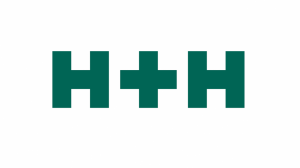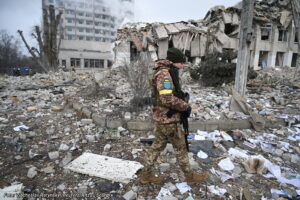Det seneste år har vist en dramatisk kløft mellem industriproduktionen i industrilandene og i de nye økonomier i resten af verden. Der har sjældent været en så stor forskel, hvor produktionen, målt i PMI, stiger kraftigt i industrilandene, mens den falder kraftigt i de nye økonomier. Det er vaccinationerne i Europa og USA og mangelen på samme i resten af verden, der gør forskellen.
Global manufacturing PMI stable in July
Developed Markets – Emerging Markets divergence widens
Over the past few days, the monthly manufacturing PMIs were published for a wide range of developed and emerging economies. The global manufacturing PMI edged down slightly, by 0.1 point to 55.4, but remains at a relatively high level (after having reached an 11-year high of 56.0 in May).
The most eye-catching development was the widening of the divergence between developed markets (DMs) and emerging markets (EMs). The aggregate manufacturing PMI for DMs rose back to the record-high of 59.8 reached earlier in May (June: 59.5), with a fresh record for the US Markit indicator (63.4). By contrast, the aggregate indicator for EMs fell back to a 13-month low of 50.7 June: 51.2).
The strength in advanced economies is arguably primarily due to their lead in vaccinations. This has enabled a reopening of economies and a broadening of the post-pandemic recovery into the services sectors, even though the flare-up of new cases with the new, more contagious delta variant has hampered the reopening process in some countries over the past months.
By contrast, EMs are generally lagging in terms of vaccinations and hence remain more susceptible to virus flare-ups and new variants. China’s manufacturing PMIs have come down in recent months, although remaining above the neutral 50 mark. That partly reflects temporary drags from the pandemic and weather factors, but also the turnaround in the credit cycle – even to the point that the PBoC has shifted back to a piecemeal easing mode to support the economy, but with an ongoing regulatory crackdown in place that has triggered volatility in equity markets recently.
In addition, it may indicate some waning in export strength as global demand rebalances from goods to services, with China’s PMI export sub-indices having dropped in recent months to below or close to the neutral 50 mark.
By contrast, India’s manufacturing PMI jumped back to 55.3 in July reflecting partial reopenings, after having fallen by almost 10 points in March-June following the very serious ‘delta’ flare-up which drove renewed lockdowns (also see our May Global Monthly here).
Elsewhere in EMs, the picture is quite divergent, with PMIs currently below 50 in countries like Indonesia, Mexico, and Russia but at relatively high levels in Taiwan, Brazil and Turkey. While in general the risks for EMs remain high, the fresh beefing-up of the IMF resources by USD 650bn that will be allocated to help lower income countries deal with the fallout from the pandemic should be a supportive factor over time. For more detail on the impact of delta on our growth outlook for DMs and EMs, see our earlier publication here.
Signs of a stabilization in cost-push price factors – The latest manufacturing PMIs also shed some light on inflationary (cost push) pressures, with the global sub-indices for input and output prices more or less stabilising at high levels. Earlier signals from China’s producer prices also point to a stabilisation, partly reflecting some easing in commodity markets.
That said, supply bottlenecks are still in play, with for instance container freight tariffs continuing to rise, and global PMI subindices for delivery times still at record lows (meaning record-long delivery times), particularly in DMs.












